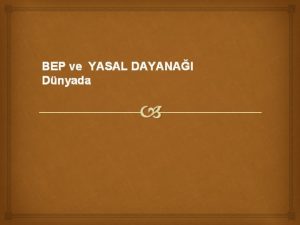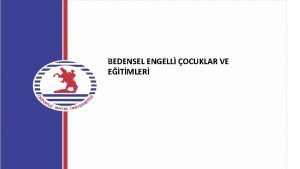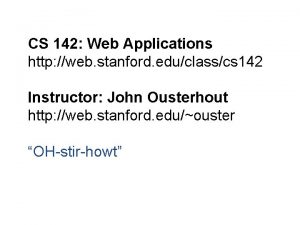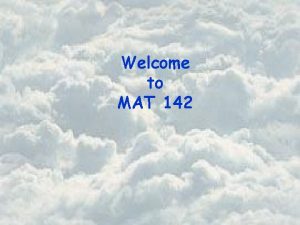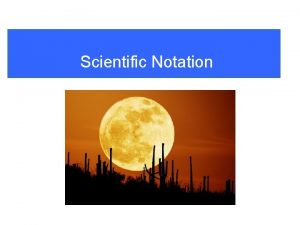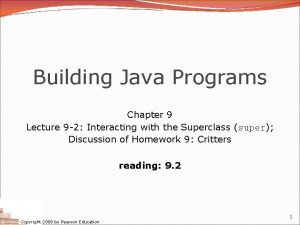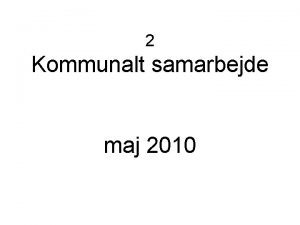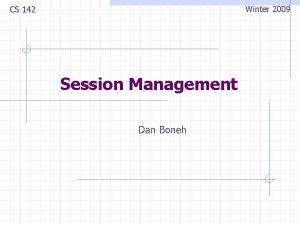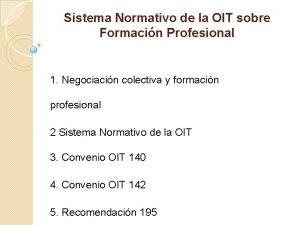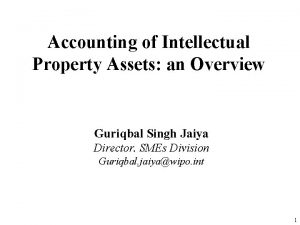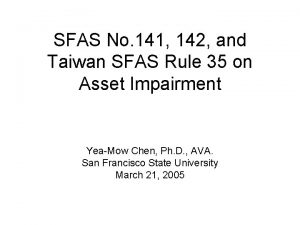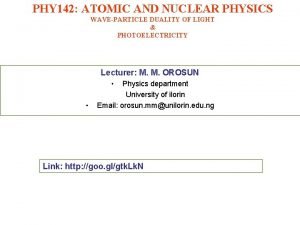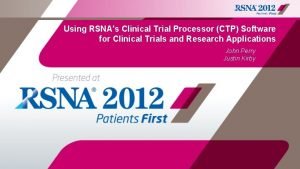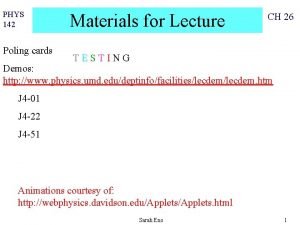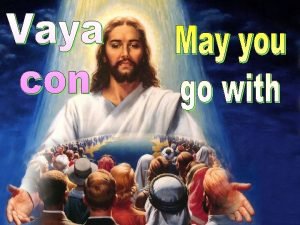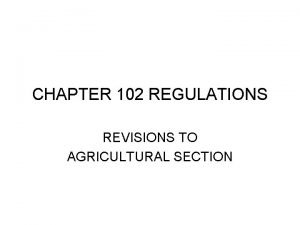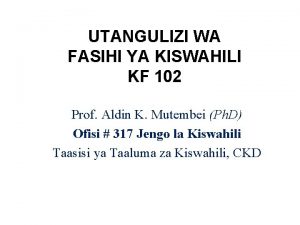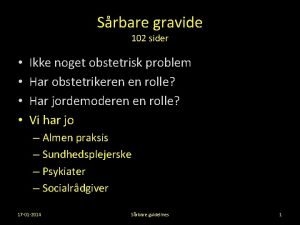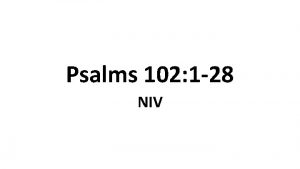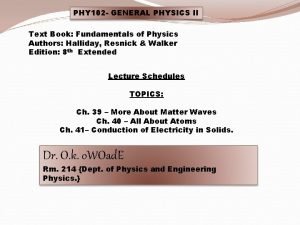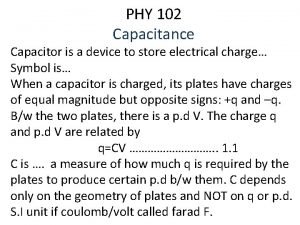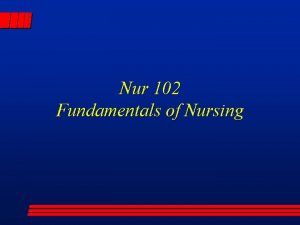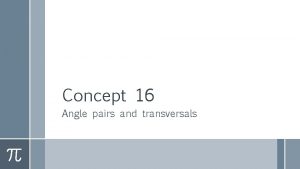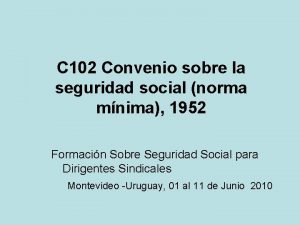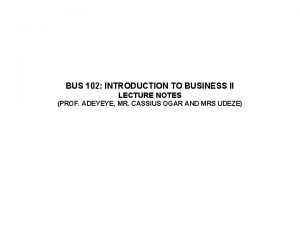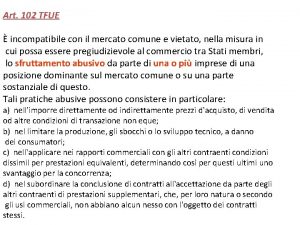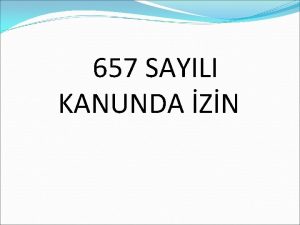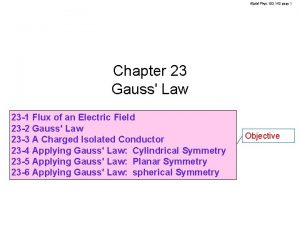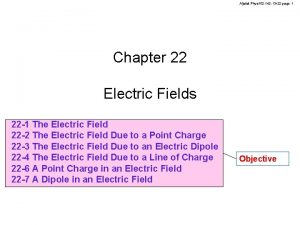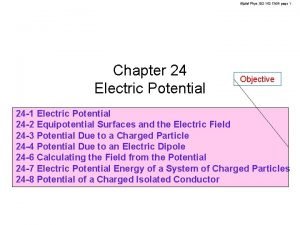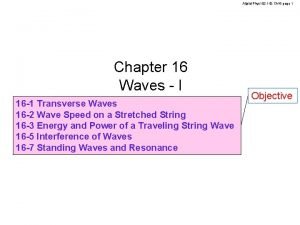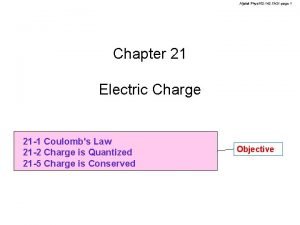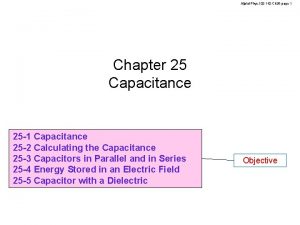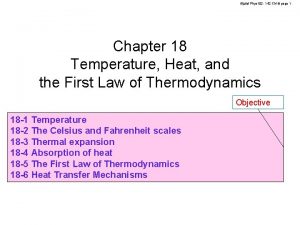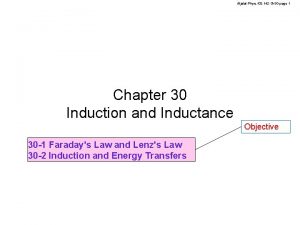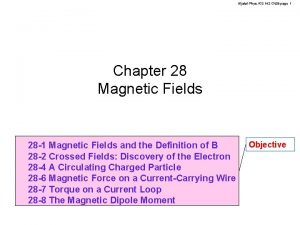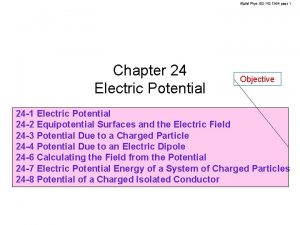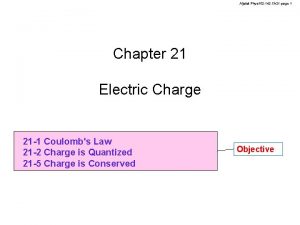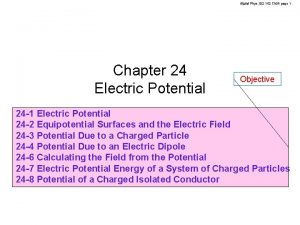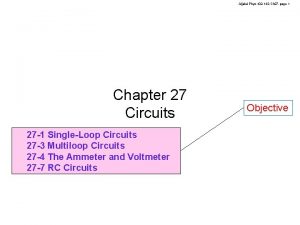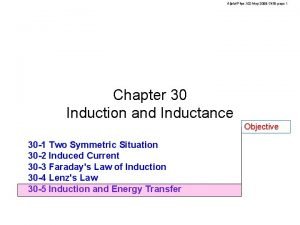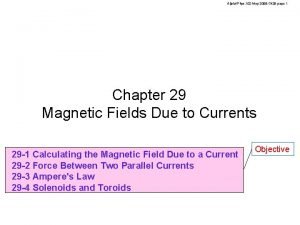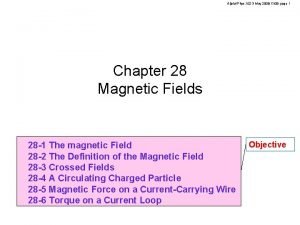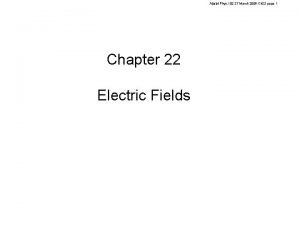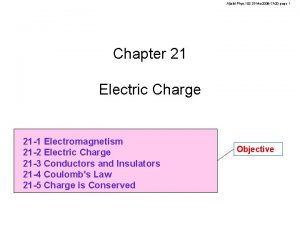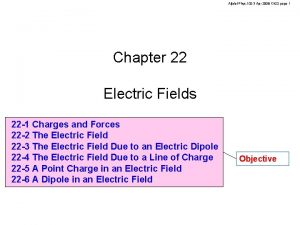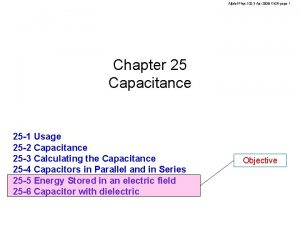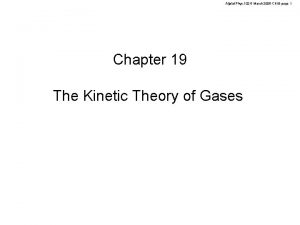AljalalPhys 102 142 Ch 19 page 1 Chapter








































- Slides: 40

Aljalal-Phys 102 - 142 -Ch 19 -page 1 Chapter 19 The Kinetic Theory of Gases 19 -1 Avogadro's Number 19 -2 Ideal Gases 19 -3 Pressure, Temperature, and RMS speed 19 -4 Translational Kinetic Energy 19 -7 The Molar Specific Heat of an Ideal Gas 19 -9 Adiabatic Expansion for an Ideal Gas Objective

Aljalal-Phys 102 - 142 -Ch 19 -page 2 19 -1 Avogadro's Number Understanding Gases Kinetic theory of gases relates the macroscopic property of gases (pressure - temperature - volume - internal energy) to the motion of atoms or molecules. gas Kinetic theory of gases pressure temperature volume internal energy

19 -1 Avogadro's Number What is a mole? Aljalal-Phys 102 - 142 -Ch 19 -page 3 Avogadro’s Number NA = 6. 02 X 1023 One mole of any element contains Avogadro’s number of atoms of that element. One mole of iron contains 6. 02 X 1023 iron atoms. One mole of gold contains 6. 02 X 1023 gold atoms. One mole of water contains 6. 02 X 1023 water molecules. From experiments: 12 g of carbon contains 6. 02 X 1023 carbon atoms. Thus, 1 mole carbon = 12 g of carbon. 4 g of helium contains 6. 02 X 1023 helium atoms. Thus, 1 mole helium = 4 g of helium. Avogadro’s Number NA = 6. 02 X 1023 per mole = 6. 02 X 1023 mol-1

Aljalal-Phys 102 - 142 -Ch 19 -page 4 19 -1 Avogadro's Number Formula - number of moles Number of molecules or atoms Avogadro’s number Number of moles mass of the sample Molar mass (mass of one mole) Molecular mass (mass of one molecule)

Aljalal-Phys 102 - 142 -Ch 19 -page 5 19 -2 Ideal Gases Ideal gas law At low enough densities, all gases tend to obey ideal gas law. Ideal gas law Gas Constant = 8. 31 J/mole. K Absolute pressure Temperature in kelvin Volume Number of moles Although, there is no such thing in nature as a truly ideal gas, all real gases approach the ideal state at low enough densities.

Aljalal-Phys 102 - 142 -Ch 19 -page 6 19 -2 Ideal Gases Ideal gas law - another form Ideal gas Law Number of moles Gas Constant = 8. 31 J/mole. K Number of molecules Boltzmann constant =1. 38 X 10 -23 J/K

Aljalal-Phys 102 - 142 -Ch 19 -page 7 19 -2 Ideal Gases Isothermal process A process in which the temperature is kept constant is called Isothermal compression Pressure isothermal process. Isothermal expansion On a P-V diagram, a curve that connects points that have the same temperature is called Isotherm. i f f i T=360 K T=340 K T=300 K Volume

Aljalal-Phys 102 - 142 -Ch 19 -page 8 19 -2 Ideal Gases Work done be an ideal gas Work done by an ideal gas at constant temperature Constant-temperature process isothermal process Work done by an ideal gas at constant volume Constant-volume process isochoric process Work done by an ideal gas at constant pressure Constant-pressure process isobaric process

Aljalal-Phys 102 - 142 -Ch 19 -page 9 19 -2 Ideal Gases Checkpoint 1 An ideal gas with an initial pressure of 3 pressure units and an initial volume of 4 volume units. Which processes start and end at the same isotherm? p V Solution All but c. a 12 1 b 6 2 c 5 7 d 4 3 e 1 12

Aljalal-Phys 102 - 142 -Ch 19 -page 10 19 -2 Ideal Gases Example 1 Oxygen in a cylinder Assume that it is ideal Initial State Pi= 15 Atm Vi = 12 L Ti=200 C Final State Pf= ? Vf = 8. 5 L Tf=350 C What is the final pressure? Solution Need to convert to Kelvin

Aljalal-Phys 102 - 142 -Ch 19 -page 11 19 -2 Ideal Gases Example 2 1 mole of oxygen expands at a constant temperature. Assume that it is ideal. Initial State Vi = 12 L Ti=310 K Solution Final State Vf =19 L Tf=310 K Work done by the gas?

Aljalal-Phys 102 - 142 -Ch 19 -page 12 19 -3 Pressure, Temperature, and RMS speed Root mean square speed Root Mean Square (RMS) speed vrms For 4 atoms v 2 v 1 For N atoms gas v 4 v 3

19 -3 Pressure, Temperature, and RMS speed Formula - root mean square speed of an ideal gas Aljalal-Phys 102 - 142 -Ch 19 -page 13 Gas constant = 8. 31 J/mol. K Root Mean Square (RMS) speed Temperature in Kelvin Molar mass (mass of one mole) Using ideal gas law At room temperature (300 K) Gas Molar Mass (g/mol) Vrms (m/s) Hydrogen 2 1920 Nitrogen 28 517 Oxygen 32 483

19 -3 Pressure, Temperature, and RMS speed Example 3 You have five numbers 5, 11, 32, 67, and 89. Find the average value of these numbers. Solution Find the rms value of these numbers. Solution Aljalal-Phys 102 - 142 -Ch 19 -page 14

Aljalal-Phys 102 - 142 -Ch 19 -page 15 19 -4 Translational Kinetic Energy Formula - average kinetic energy of a molecule of an ideal gas The average translational kinetic energy per molecule of an ideal gas Boltzmann constant =1. 38 X 10 -23 J/K Temperature in Kelvin At a given temperature, all ideal gas molecules – no matter what their masses – have the same average translational kinetic energy.

19 -4 Translational Kinetic Energy Checkpoint 2 Aljalal-Phys 102 - 142 -Ch 19 -page 16 A gas mixture consists of molecules of type 1, 2, and 3, with molecular masses m 1>m 2>m 3. Rank the three types according to (a) average kinetic energy, and (b) rms speed, greatest first. Solution (a) All have the same kinetic energy. (b) rms speed 3, then 2, then 1.

19 -7 The Molar Specific Heat of an Ideal Gas Internal energy of an ideal gas Aljalal-Phys 102 - 142 -Ch 19 -page 17 For a monatomic gas (which has individual atoms rather than molecules), the internal energy Eint is the sum of the translational kinetic energies of the atoms. Internal energy of a monatomic gas Gas constant = 8. 31 J/mole. K Number of moles Temperature in Kelvin The internal energy Eint of a confined ideal gas is a function of the gas temperature only, it does not depend on any other variable.

19 -7 The Molar Specific Heat of an Ideal Gas Review - heat capacity Aljalal-Phys 102 - 142 -Ch 19 -page 18 Heat capacity Heat Change in temperature Q = C DT Q = Cmolar n DT Heat capacity = (Molar specific heat) (Number of moles) Molar specific heat is the heat needed to raise one mole of a substance by one unit temperature.

19 -7 The Molar Specific Heat of an Ideal Gas Specific heat depends on the path of the process Aljalal-Phys 102 - 142 -Ch 19 -page 19 Molar specific heat is the heat needed to raise one mole of a substance by one unit temperature. Pressure i Pressure But heat depends on the path! To find the specific heat, we need to specify the path. f Molar specific heat at constant volume CV Volume i f Molar specific heat at constant pressure Volume Cp

19 -7 The Molar Specific Heat of an Ideal Gas Specific heats of solid, liquid and gas Aljalal-Phys 102 - 142 -Ch 19 -page 20 For solids and liquids, the difference between CV and Cp is small. Usually, we do not need to distinguish CV from Cp. We just use one value for specific heat or molar specific heat. For gases, the difference between CV and Cp is big. We need to distinguish CV from Cp.

19 -7 The Molar Specific Heat of an Ideal Gas Formula - molar specific heat of an ideal gas Pressure f Molar specific heat at constant volume For monatomic ideal gas (Gas consists of single atoms) i Gas Constant = 8. 31 J/mole. K Volume Pressure Aljalal-Phys 102 - 142 -Ch 19 -page 21 Molar specific heat at constant pressure For monatomic ideal gas f i Volume

19 -7 The Molar Specific Heat of an Ideal Gas Derivation of molar specific heat at constant volume Derivation of CV Aljalal-Phys 102 - 142 -Ch 19 -page 22 First law of thermodynamics Pressure W=0 f i Volume

19 -7 The Molar Specific Heat of an Ideal Gas Derivation of molar specific heat at constant pressure Derivation of CP Aljalal-Phys 102 - 142 -Ch 19 -page 23 First law of thermodynamics Pressure W=p. DV p. V=n. RT p. DV=n. RDT f i Volume

19 -7 The Molar Specific Heat of an Ideal Gas Monatomic, diatomic, and polyatomic gases gas Monatomic gas Gas consists of single atoms. gas Diatomic gas Each molecule has two atoms. Aljalal-Phys 102 - 142 -Ch 19 -page 24 gas Polyatomic gas Each molecule has more than two atoms.

Aljalal-Phys 102 - 142 -Ch 19 -page 25 19 -7 The Molar Specific Heat of an Ideal Gas Internal energy of monatomic, diatomic, and polyatomic gases Cv Eint=n. CVT Cp=Cv+R Degrees of freedom (translational + rotational) Monatomic gas Gas consists of single atoms. 3 Diatomic gas Each molecule has two atoms. 5 Polyatomic gas Each molecule has more than two atoms. 6 Eint=n. CVT

Aljalal-Phys 102 - 142 -Ch 19 -page 26 19 -7 The Molar Specific Heat of an Ideal Gas Internal energy of ideal gas depends only on its temperature n = constant Pressure A change in the internal energy Eint of a confined ideal gas depends on the change of the gas temperature only; it does not depend on what type of process produces the change in the temperature. f f i f The change in the internal energy of the gas is the same for all three processes. T=340 K T=300 K Volume

Aljalal-Phys 102 - 142 -Ch 19 -page 27 Pressure 19 -7 The Molar Specific Heat of an Ideal Gas Checkpoint 3 Rank the paths according to the change in internal energy of the gas, greatest first 1 2 3 4 5 T 3 T 2 T 1 Volume Solution Path 5, then the others tie DEint=n. CVDT

19 -7 The Molar Specific Heat of an Ideal Gas Example 4 Helium bubble 5 moles Water He Initial Heat added to helium? Work done by the helium? Expansion Same pressure DT = 20 C 0 Aljalal-Phys 102 - 142 -Ch 19 -page 28 Water He Final Change in the internal energy of the helium?

Aljalal-Phys 102 - 142 -Ch 19 -page 29 19 -8 Adiabatic Expansion for an Ideal Gas Conserved quantities for reversible adiabatic processes Review In adiabatic processes, no heat transferred to the system Q=0 Either system is well insulated, or process occurs so rapidly. Adiabatic Expansion DEint = - W

Pressure 19 -8 Adiabatic Expansion for an Ideal Gas Illustration Adiabatic Expansion Adiabat (Q=0) No heat transfer gas Pi Aljalal-Phys 102 - 142 -Ch 19 -page 30 i Insulations f Pf Vi Vf Ti Tf Volume gas

Pressure 19 -8 Adiabatic Expansion for an Ideal Gas Reversible adiabatic expansion Pi Aljalal-Phys 102 - 142 -Ch 19 -page 31 For adiabatic reversible expansion, Adiabat (Q=0) i f Pf Vi Vf Apply when the gas is almost at equilibrium at each moment between the initial and final states. We know the pressure and volume at each point along the path. We can draw a line between the initial and final points. Ti Tf Volume

Aljalal-Phys 102 - 142 -Ch 19 -page 32 19 -8 Adiabatic Expansion for an Ideal Gas Review - free emanation Free expansion Valve Gas Vacuum P=0 Initial Insulation Gas Final System is insulated Q = 0 DEint = 0 We do not know the volume and pressure at points between the initial and final states.

19 -8 Adiabatic Expansion for an Ideal Gas Free expansion is an irreversible adiabatic process Although, a free expansion is an adiabatic process, p. Vg is not constant TVg-1 is not constant Pressure Pi Aljalal-Phys 102 - 142 -Ch 19 -page 33 i f Pf Vi Vf In free expansion, the system is not in equilibrium at each moment between the initial and final states. We do not know the pressure and volume at points between the initial and final points. We can not draw a line between the initial and final points. Volume

19 -8 Adiabatic Expansion for an Ideal Gas Conserved quantities for free expansions Aljalal-Phys 102 - 142 -Ch 19 -page 34 For a free expansion, DEint = n CV DT = 0 T = Constant Ti = Tf p. V = n. RT p. V = Constant p i. V i = p f V f

19 -8 Adiabatic Expansion for an Ideal Gas Example 5 Aljalal-Phys 102 - 142 -Ch 19 -page 35 1 mole of oxygen expands adiabatically. Assume that it is ideal. Oxygen is a diatomic gas (g = 7/5=1. 4). Initial state Vi = 12 L Ti=310 K Pi=2 Pa Final state Vf =19 L Tf=? Pf= Final temperature? Solution When we say a process is adiabatic, we mean reversible adiabatic process.

19 -8 Adiabatic Expansion for an Ideal Gas Example 6 Aljalal-Phys 102 - 142 -Ch 19 -page 36 1 mole of oxygen expands freely Assume that it is ideal. Oxygen Is a diatomic gas (g = 7/5=1. 4). Initial state Vi = 12 L Ti=310 K Pi=2 Pa Solution Final state Vf =19 L Tf=? Pf=? Final temperature? Final pressure?

Aljalal-Phys 102 - 142 -Ch 19 -page 37 Rank the paths according to the heat transfer to the gas Pressure 19 -8 Adiabatic Expansion for an Ideal Gas Checkpoint 4 Process 3 is an adiabatic process 1 2 T=700 K T= 500 K T =300 K 3 Volume Solution Path 1, then 2, then 3. path DEint=n. CVDT W 1 Largest 2 0 3 Smallest

19 -8 Adiabatic Expansion for an Ideal Gas Derivation of the relation between P and V - 1 Aljalal-Phys 102 - 142 -Ch 19 -page 38 Derivation of PVg = Constant DEint = Q - W Small change DEint = n. CVDT Small change p. V = n. RT Small change d. Eint = -d. W d. Eint = -pd. V d. Eint = n. CVd. T pd. V+Vdp = n. Rd. T Please, see the next page

19 -8 Adiabatic Expansion for an Ideal Gas Derivation of the relation between P and V - 2 Continuation from the previous page Aljalal-Phys 102 - 142 -Ch 19 -page 39

19 -8 Adiabatic Expansion for an Ideal Gas Derivation of the relation between T and V Derivation of TVg-1 = Constant Aljalal-Phys 102 - 142 -Ch 19 -page 40
 Apa style powerpoint
Apa style powerpoint 200 to 300 prime numbers
200 to 300 prime numbers Pl 94 142
Pl 94 142 Pl 94 142
Pl 94 142 Numeros romanos ejercitacion
Numeros romanos ejercitacion Stanford cs 142
Stanford cs 142 Psalms 142 meaning
Psalms 142 meaning Asu mat 142
Asu mat 142 5600 in scientific notation
5600 in scientific notation Phm142
Phm142 Superget move 5000 essential
Superget move 5000 essential Læ 135
Læ 135 Stanford cs 142
Stanford cs 142 Convenio 142 oit
Convenio 142 oit Sfas 142
Sfas 142 Statement of financial accounting standards no 141
Statement of financial accounting standards no 141 Physics 142
Physics 142 Dicom supplement 142
Dicom supplement 142 Phys 142
Phys 142 142 984 km in miles
142 984 km in miles 142 cooper river drive
142 cooper river drive 100000/142
100000/142 Fitness chapter 102
Fitness chapter 102 4 forces of nature
4 forces of nature Uiuc physics 102
Uiuc physics 102 Maana ya fasihi ya kiswahili pdf
Maana ya fasihi ya kiswahili pdf Kraniesynostose
Kraniesynostose Convenio 102 norma minima de seguridad social
Convenio 102 norma minima de seguridad social Psalm 102 niv
Psalm 102 niv Psalm 102
Psalm 102 Physics 102
Physics 102 102 capacitor
102 capacitor Nur 102
Nur 102 Met 102
Met 102 Significant vs important
Significant vs important Csc 102 introduction to problem solving
Csc 102 introduction to problem solving In the figure m 3=102
In the figure m 3=102 Convenio 102
Convenio 102 Bus 102
Bus 102 Art 102 tfue
Art 102 tfue 657 sayılı kanun 102. madde
657 sayılı kanun 102. madde


